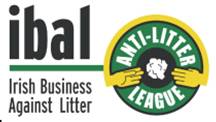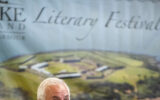6 September 2022
By Elaine Murphy
elaine@TheCork.ie
The annual nationwide survey by business group Irish Business Against Litter (IBAL) of beaches and harbours shows Cork Harbour at Blackrock Castle and White Bay beach again ‘heavily littered’ at the foot of the rankings of 33 areas surveyed. Kinsale has fallen to ‘littered’ alongside Bantry and Ballinacurra, with Castletownbere ‘moderately littered’.
Overall, litter levels are on the rise, with only 8 areas receiving the ‘Clean’ designation. Aside from its impact on tourism and recreation, IBAL is warning that coastal litter has grave implications for the future of our planet.
The An Taisce report for Cork Harbour at Blackrock Castle stated: “The two car parks, walkway and small cove had a moderate level of litter, mostly food related items. The walkways, green areas and river were clear but it was the litter and dumping at Dutchman’s Cove which really brought down the litter grade. While waste from Cork Harbour gets washed up here, there was evidence of land-based dumping e.g. large black sack of rubbish. Other miscellaneous items included car tyres, construction signage, rubber dinghy and stroller. Cork Co Co / Clean Coast signage relating to monthly clean ups and Greenway signage were in good order, as was the area in the immediate vicinity of Blackrock Castle e.g. bicycle parking and visitor information feature. We note that great work had taken place at Blackrock Castle a couple of months ago and very large volumes of litter / dumping had been removed.”
The An Taisce report for White Bay stated: “The car park and pathways were moderately littered but it was the area closer to the beach and littering in the caves / areas hidden by the rock face which really brought down the overall litter grade. There was a high level of alcohol related litter. As well as casually discarded food related items, there was the remnants of a camp-fire and larger miscellaneous items e.g. pillow, duvet. The main beach area didn’t suffer the same levels of litter as those areas highlighted above.”
The An Taisce report for Kinsale stated: “Many of the litter items were food related and associated with the market in the car park. Other land-based items included alcohol cans and cigarette butts; water-based items included plastic bottles, plastic containers, cans and miscellaneous items e.g. car tyre. Hard hitting dog fouling signage with ‘Protect Public Health, Be Responsible’ appears to be having the desired effect as there was none evident.”
The An Taisce report for Ballinacurra stated: “There appears to be a temporary bin solution with the provision of large green sacks. The main litter issues were along the grass verges / unused areas / pedestrian pathway where there were a variety of casually discarded land-based items. Larger miscellaneous items were found within the water (car tyre / traffic cone) and by the waters’ edge (mostly food related items). Marine related items included fishing lines, nets and ropes. Picnic table and wooden seating were freshly presented and some of the signage was in good order but not all.”
The An Taisce report for Bantry stated: “There was a very definite litter presence at Bantry with a variety of typical food and alcohol related items present; other non-food items included face-masks, clothing items and very high levels of cigarette butts – and this was just the land-based litter. This took away from the attractively paved area with seating and planting. Within the water and at the water’s edge there were larger, long-lie items e.g. pieces of wood, large pieces of plastic wrapping and other miscellaneous items. On first impressions the recycle facility appeared in good order but further inspection revealed items stuffed between and behind the units. Marine related items included fishing nets / rope / lobster pots and buoys / car tyres.”
The An Taisce report for Castletownbere stated: “Overall, Castletownbere was quite good with regard to litter and there was evidence of community involvement but it was let down by an overflowing litter bin beside a fast-food van, long-lie litter in the seaweed by the shore line and very obvious dog fouling and cigarette butts. Building materials and marine related litter e.g. fishing lines / nets / ropes were also present. Colourfully painted wooden based flower boxes with abundant planting within were a lovely feature; there were no visible opportunities for ‘recycling’ / ‘separating waste’.”
Beaches, harbours, rivers and their immediate environs were monitored by An Taisce in June and July. While Tramore was again clean, many popular beaches slipped to ‘moderately littered’ status, among them Lahinch, Brittas Bay, Curracloe, Portmarnock, Strandhill and Clogherhead. Bundoran was again ‘littered’. By contrast, Salthill improved significantly.
“Unfortunately the improvement observed at our beaches last year seems to have reversed this time round,” commented IBAL’s Conor Horgan. “We had hoped that the decline in Covid-related litter might bring an improvement in overall cleanliness, added to the fact that many who staycationed last year would have travelled abroad this summer. Our most popular beaches are not heavily littered, but they’re not as clean as they should be.”
Covid-related litter on the decline … but not coffee cups
Unsurprisingly there was a fall-off in Covid masks and gloves found, but also in alcohol-related litter which was linked to lockdown. Coffee cups remained a significant litter item, however, present in half of the areas surveyed. The most common forms of litter found by the assessors were cigarette butts, sweet wrappers and plastic bottles.
“Every day it seems we hear more of the dire consequences which marine litter, much of it plastic, holds for our planet,“ adds Mr Horgan. “We need to impress on people that simple individual actions such as discarding a coffee cup – or even a cigarette butt – have implications which stretch beyond the local environment.”
With 10 million tonnes of plastic ending up in our oceans each year, it is estimated that there will be more plastic than fish in our oceans within 30 years. Research shows a single cigarette butt can contaminate up to 200 litres of water.
IBAL coastal litter survey 2022* results (Cork areas are highlighted in bold font)
| Clean To European Norms | |
| Bray seafront | Wicklow |
| Dun Laoghaire harbour | Dublin |
| Keem beach | Mayo |
| Killiney beach | Dublin |
| Mountshannon (River Shannon) | Clare |
| Old Head beach | Mayo |
| Salthill beach | Galway |
| Tramore beach | Waterford |
| Moderately Littered | |
| Ballybunion beach | Kerry |
| Brittas Bay | Wicklow |
| Castletownbere harbour | Cork |
| Curracloe beach | Wexford |
| Clogherhead beach | Louth |
| Dog’s Bay beach | Galway |
| Doolin pier and harbour | Clare |
| Dungarvan harbour | Waterford |
| Killybegs harbour | Donegal |
| Kilmore Quay harbour | Wexford |
| Lahinch beach | Clare |
| Portmagee harbour | Kerry |
| Portmarnock beach | Dublin |
| Skerries beach | Dublin |
| Strandhill beach | Sligo |
| Littered | |
| Ballinacurra | Cork |
| Bantry harbour | Cork |
| Bundoran beach | Donegal |
| Dingle harbour | Kerry |
| Kinsale harbour | Cork |
| Lough Rea (Loughrea) | Galway |
| Heavily Littered | |
| Annesley Bridge (River Tolka) | Dublin |
| Cork Harbour (Blackrock Castle) | Cork |
| Grand Canal Dock | Dublin |
| White Bay beach | Cork |
*Areas surveyed comprise waterfront and immediate environs. Within each category, order is alphabetical.


